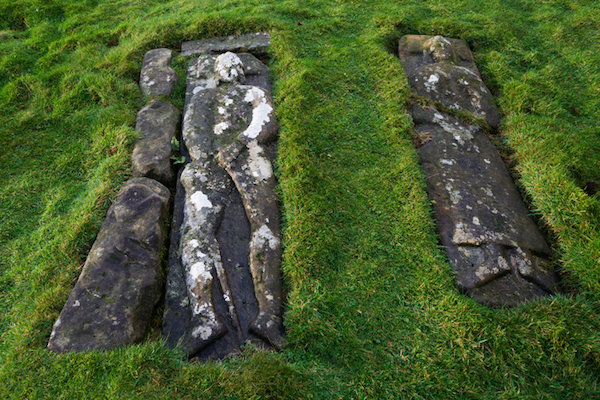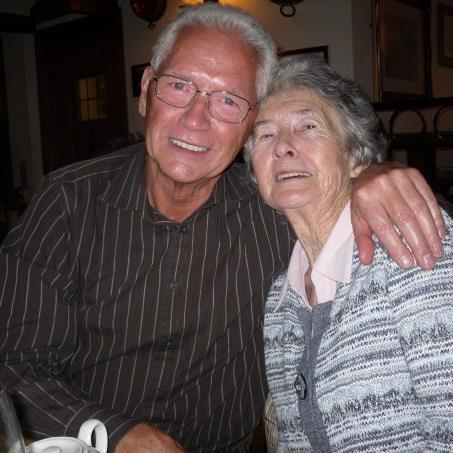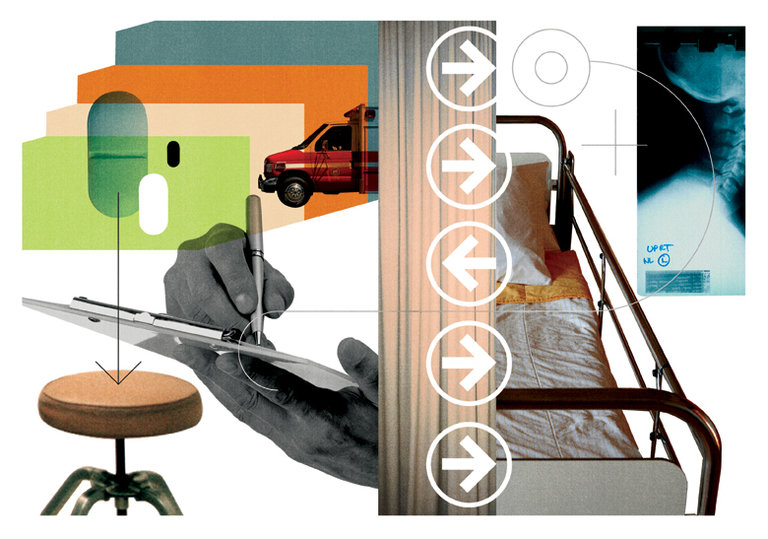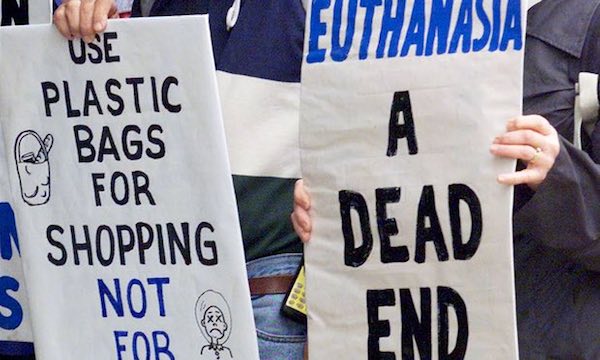
By
[E]very Thursday morning on the heart transplant service, our medical team would get a front-row seat to witness an epic battle raging under a microscope. Tiny pieces of heart tissue taken from patients with newly transplanted hearts would be broadcast onto a gigantic screen, showing static images of pink heart cells being attacked by varying amounts of blue immune cells. The more blue cells there were, the more voraciously they were chomping away the pink cells, the more evidence that the patient’s inherently xenophobic immune system was rejecting the foreign, transplanted heart.
There was so much beauty to be found in the infinitesimal push and pull between life and death those slides depicted that I would fantasize about having them framed and put up in my house. Yet the more I studied those cells, the more I realized that they might have the answers to one of the most difficult subjects of our time.
Throughout our history, particularly recently, the human race has looked far and wide to answer a complex question — what is a good death? With so many life-sustaining technologies now able to keep us alive almost indefinitely, many believe that a “natural” death is a good one. With technology now invading almost every aspect of our lives, the desire for a natural death experience mirrors trends noted in how we wish to experience birth, travel and food these days.
When we picture a natural death, we conjure a man or woman lying in bed at home surrounded by loved ones. Taking one’s last breath in one’s own bed, a sight ubiquitous in literature, was the modus operandi for death in ancient times. In the book “Western Attitudes Toward Death,” Philippe Ariès wrote that the deathbed scene was “organized by the dying person himself, who presided over it and knew its protocol” and that it was a public ceremony at which “it was essential that parents, friends and neighbors be present.” While such resplendent representations of death continue to be pervasive in both modern literature and pop culture, they are mostly fiction at best.
This vision of a natural death, however, is limited since it represents how we used to die before the development of modern resuscitative technologies and is merely a reflection of the social and scientific context of the time that death took place in. The desire for “natural” in almost every aspect of modern life represents a revolt against technology — when people say they want a natural death, they are alluding to the end’s being as technology-free as possible. Physicians too use this vocabulary, and frequently when they want to intimate to a family that more medical treatment may be futile, they encourage families to “let nature take its course.”
Yet, defining death by how medically involved it is might be shortsighted. The reason there are no life-sustaining devices in our romantic musings of death is that there just weren’t any available. Furthermore, our narratives of medical technology are derived largely from the outcomes they achieve. When death is unexpectedly averted through the use of drugs, devices or procedures, technology is considered miraculous; when death occurs regardless, its application is considered undignified. Therefore, defining a natural death is important because it forms the basis of what most people will thus consider a good death.
Perhaps we need to observe something even more elemental to understand what death is like when it is stripped bare of social context. Perhaps the answer to what can be considered a truly natural death can be found in the very cells that form the building blocks of all living things, humans included.
Though we have known for more than a century how cells are created, it is only recently that we have discovered how they die. Cells die via three main mechanisms. The ugliest and least elegant form of cell death is necrosis, in which because of either a lack of food or some other toxic injury, cells burst open, releasing their contents into the serums. Necrosis, which occurs in a transplanted heart undergoing rejection, causes a very powerful activation of the body’s immune system. Necrosis, then, is the cellular version of a “bad death.”
The second form of cell death is autophagy, in which the cell turns on itself, changing its defective or redundant components into nutrients, which can be used by other cells. This form of cell death occurs when food supply is limited but not entirely cut off, such as in heart failure.
The most sophisticated form of cell death, however, is unlike the other two types. Apoptosis, a Greek word used to describe falling leaves, is a programmed form of cell death. When a cell becomes old or disrepair sets in, it is nudged, usually by signaling molecules, to undergo a form of controlled self-demolition. Unlike in necrosis, the cell doesn’t burst, doesn’t tax the immune system, but quietly dissolves. Apoptosis is the reason our bone marrow doesn’t weigh two tons or our intestines don’t grow indefinitely.
As important as apoptosis is to death, it is essential for life. While as humans, we often consciously or unconsciously hope to achieve immortality, immortality has a very real existence in the cellular world — it’s called cancer. In fact, most cancers occur because of defects in apoptosis, and most novel cancer therapies are designed to allow cell death to occur as it normally would.
In many ways, therefore, life and death at a cellular level are much more socially conscious than how we interface with these phenomena at a human level. For cells, what is good for the organism is best for the cell. Even though cells are designed entirely to survive, an appropriate death is central to the survival of the organism, which itself has to die in a similar fashion for the sake of the society and ecosystem it inhabits.
We humans spend much of our lives denying death. Death, however, is not the enemy. If there is an enemy, it is the fear that death arouses. The fear of death often induces us to make choices that defy the biological constraints of our existence. Such choices often lead us to a fate that more closely resembles necrosis, involving the futile activation of innumerable resources eventually resulting in a cataclysmic outcome, rather than apoptosis. Furthermore, even as we hope to defy our mortality, our cells show the devastation that can occur for the organism if even one cell among billions achieves immortality.
When I asked Robert Horvitz, the Nobel Prize-winning biologist at the Massachusetts Institute of Technology who was part of the group that discovered apoptosis, what lessons we could learn from cell death, his answer demonstrated exactly why we have failed to understand death in the context of our lives: “Only once before has someone approached me to discuss the existential questions that might relate what is known about cell death to human existence.”
The question for us, then, is: What is the human equivalent of apoptosis in the context of our society? One way to approach that question is to look at what the human equivalent of necrosis is. To me, if a human being is in the hospital with intensive, life-sustaining therapies such as artificial respiration, nutrition or dialysis sustaining them with little hope of recovering reasonable brain function, such a state could be considered necrosis. Almost any other alternative, whether one dies in the hospital having rescinded resuscitation or intubation (DNR/DNI), at home with hospice services or with the aid of a physician’s prescription, has much more in common with apoptosis.
We have striven endlessly to answer some of our most crucial questions, yet somehow we haven’t tried to find them in the basic machinery of our biology. Apoptosis represents a pure vision of death as it occurs in nature, and that vision is something we might aspire to in our own deaths: A cell never dies in isolation, but in clear view of its peers; it rarely dies of its own volition; a greater force that is in touch with the larger organism understands when a cell is more likely to harm itself and those around it by carrying on. Apoptosis represents the ultimate paradox — for the organism to survive, the cells must die, and they must die well. “There are many disorders in which there is too little apoptotic death,” Dr. Horvitz said, “and in those cases it is activating apoptosis that could increase longevity.”
And finally, a cell also understands better than we humans do the consequences of outlasting one’s welcome. For though humanity aspires to achieve immortality, our cells teach us that a life without death is the most unnatural fate of all.
Complete Article HERE!







